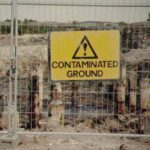Nova Scotia Introduces New Contaminated Sites Regulations

Contaminated sites are usually extensively regulated under environmental law. But until recently, Nova Scotia didn’t have such regulations. That situation changed on July 6, 2013, when the province’s new Contaminated Sites Regulations took effect. The government says the new regulations provide a clear, efficient and timely process to identify, manage and clean up contaminated sites and hold those responsible for remediating these sites to a consistent standard. Here’s an overview of the new regulations.
THE REGULATIONS
What They Apply to: The regulations apply to contaminated sites, which according to Nova Scotia Environment, are pieces of land that may be contaminated as the result of long-term industrial use, such as gas stations, dry cleaners, storage facilities, etc., or from unplanned activity such as a leaking home heating oil tank.
Key Requirements: The new regulations address three key areas:
Notice. The regulations require a person responsible for a contaminated site where ‘free product’ is present in soil or groundwater to, as soon as the person knows or ought to know that the free product is present, immediately report it to the government. That person must follow up with a written notice within five days of the verbal notice. In addition, a person responsible for a contaminated site where a contaminant or contaminants exceed a Ministerial Protocol must, no later than 90 days after the date he first knows or ought to know that the contaminant or contaminants exceed that protocol, report it to the government in writing. The regulations spell out the information that must be included in these written notices.
Duties. Under the regulations, a person responsible for a contaminated site must, at his own cost and as soon as he knows or ought to know that a site’s contaminated, take any measures required by an inspector or an administrator and take all reasonable measures to:
- Prevent, reduce and remedy the adverse effects of the contaminant or contaminants;
- Remove or otherwise dispose of the contaminant or contaminants in a manner that minimizes adverse effects; and
- Remediate the contaminated site in accordance with the regulations.
There are two levels of cleanup under the new regulations:
- A limited remediation allows property owners to remove contamination or leave it, under very controlled conditions that reduce risks to people and the environment; and
- A full property remediation requires removal of all contamination.
Site professionals. Remediation of contaminated sites may be done only by qualified site professionals. The regulations specify that to be qualified, a professional must have:
- A valid and subsisting certificate of registration or licence to practice under the Geoscience Profession Act or the Engineering Profession Act; and
- At least five years’ experience in contaminated site investigation, management and remediation, including experience in conducting phase 1 and phase 2 environmental site assessments; developing a remedial action plan and implementing such a plan.
The regulations also address the liability insurance requirements for site professionals.
ANALYSIS
Nova Scotia says that the primary goals for creating the contaminated sites regulations are to:
- Create a clear process for assessing and cleaning up contaminated sites;
- Stimulate brownfields development and the economy while protecting the environment; and
- Address historical questions regarding the province’s expectations for management of contaminated sites.
To learn more about the new regulations, Nova Scotia Environment has a detailed presentation that you can watch online. There are also various Ministerial Protocols that apply to the regulations.